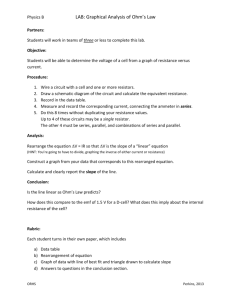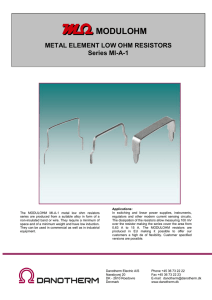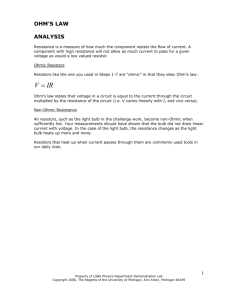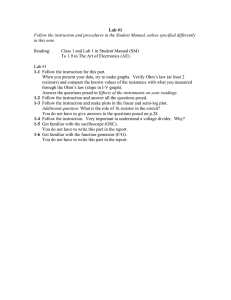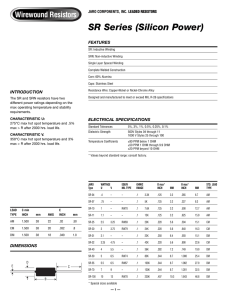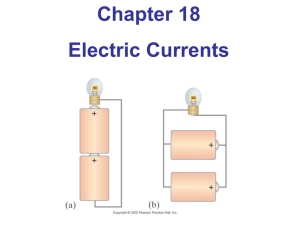Chapter 18 Electric Currents
advertisement
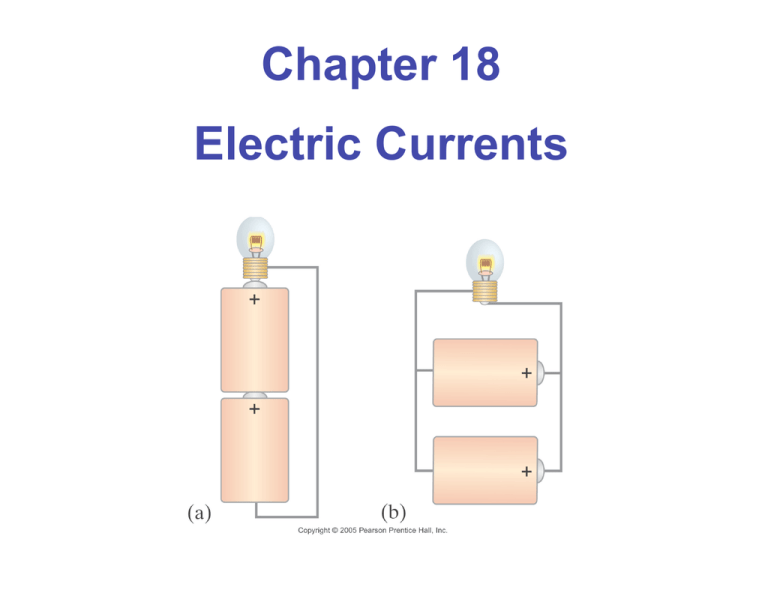
Chapter 18 Electric Currents 18.2 Electric Current Electric current is the rate of flow of charge through a conductor: (18-1) Unit of electric current: the ampere, A. 1 A = 1 C/s. 18.2 Electric Current A complete circuit is one where current can flow all the way around. Note that the schematic drawing doesn’t look much like the physical circuit! 18.3 Ohm’s Law: Resistance and Resistors Experimentally, it is found that the current in a wire is proportional to the potential difference between its ends: 18.3 Ohm’s Law: Resistance and Resistors The ratio of voltage to current is called the resistance: (18-2a) (18-2b) 18.3 Ohm’s Law: Resistance and Resistors In many conductors, the resistance is independent of the voltage; this relationship is called Ohm’s law. Materials that do not follow Ohm’s law are called nonohmic. Unit of resistance: the ohm, Ω. 1 Ω = 1 V/A. 18.3 Ohm’s Law: Resistance and Resistors Some clarifications: • Batteries maintain a (nearly) constant potential difference; the current varies. • Resistance is a property of a material or device. • Current is not a vector but it does have a direction. • Current and charge do not get used up. Whatever charge goes in one end of a circuit comes out the other end. 18.4 Resistivity The resistance of a wire is directly proportional to its length and inversely proportional to its cross-sectional area: (18-3) The constant ρ, the resistivity, is characteristic of the material. 18.4 Resistivity 18.5 Electric Power Power, as in kinematics, is the energy transformed by a device per unit time: (18-5) 18.5 Electric Power The unit of power is the watt, W. For ohmic devices, we can make the substitutions: (18-6a) (18-6b) 18.5 Electric Power What you pay for on your electric bill is not power, but energy – the power consumption multiplied by the time. We have been measuring energy in joules, but the electric company measures it in kilowatthours, kWh.


